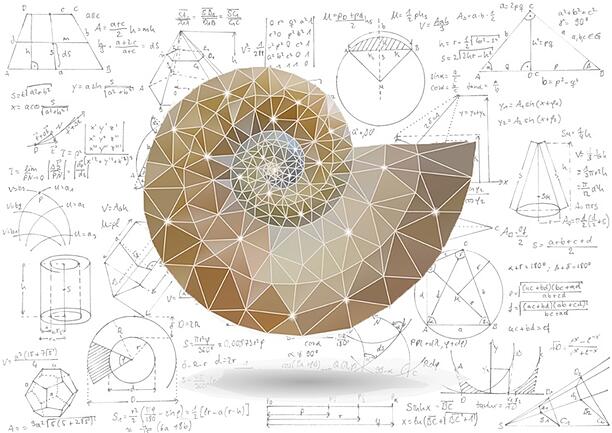RobotLAB Blog
Everything You Need To Know About Robotics in Businesses
10 ways to bring Edtech into your school
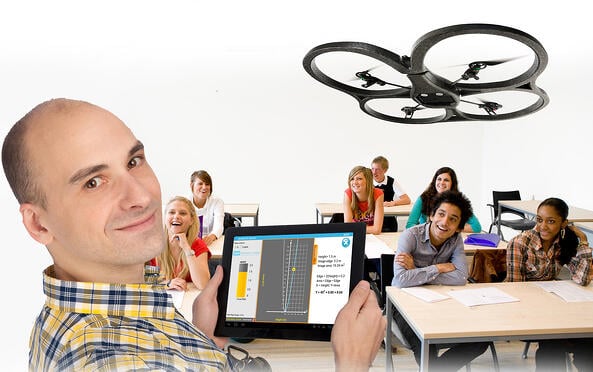
There is plenty of educational technology out there waiting for educators and teachers to use in their schools. And RobotsLAB provides some of the best with its engaging BOX, MathBALL, MAKERBOT 3D printers and anthropomorphic robots like NAO, BIOLOID and DARwin OP. But according to many educators, much as they would like to see more edtech, getting their school systems to accept it is not an easy matter.
Lack of money is one of the first problems that teachers say they run into when they try to upgrade classroom technology. They have a point: some technology, like providing every student with a tablet, costs a financially challenged school district many hundreds of thousands of dollars. But providing every student with a new gadget isn’t the only way to get edtech into schools. Believe it or not there is a lot of free stuff out there that can engage an entire class with only a nominal original outlay.
Scratch, the programming language for example, can teach kids about coding using the computers most (I would hope all) school districts already have. With a single low-priced 3-D printer in the classroom (MAKERBOT 3D printer sells for less than two grand) teachers have a tool that will bring kids into contact with the new manufacturing technology considered by many, including President Obama, as the new revolution in technology. With the 3D printer in hand, teachers can turn to such online repositories as Thingiverse for thousands of free, interesting and engaging 3D templates. For more free edtech ideas try Googling the phrase free edtech. If your school district is having trouble coming up with even the nominal costs like a few 3D printers or a RobotsLAB BOX or two, consider government or private grants. You’ll be amazed at the number of grants available for educational technology if you Google the phrase educational technology grants.
Of course lack of funds is not the only impediment to getting new educational technology into schools. Schools, like all institutions, struggle with change. Educator and edtech blogger Dr. Justin Tarte has what he calls 10 tips for starting a technology revolution that might prove useful for those of you out there who are determined to upgrade the level of tech in your schools.
1 - Make sure the administration is on board…
2 - Lay the groundwork and foundation by asking simple questions… (find out what what level your colleagues are in this revolution you hope to start)
3 - Some educators will be advanced...but most will not be - GO SLOW…
4 - Do not drown your fellow educators with too much too soon…
5 - Support and encourage your shining stars…
6 - Use the largest, loudest, and most listened to group in the school - the students…
7 - Get constant feedback from your colleagues…
8 - Offer your time to help others (off the clock)...
9 - Help make technology and social media applicable to their class / content area...
10 - When you get discouraged, don't - the revolution will be long and hard…
- 0 Comments
- Sep 3, 2014 10:03:00 PM
- Posted by Brendan Barnard
- Topics:
Math meets art -- are you inspired?
That math and music are closely related has been known forever. Music symbols (not cymbals) read like strangely designed math symbols -- or maybe the other way around depending on your orientation. A musical piece divides into measures and bars, which are further delineated by beats, and fractions are used to indicate the length of individual notes. What isn’t as well known is the relationship between math and the graphic arts. That math can be beautiful...
- 0 Comments
- Jul 14, 2014 12:36:35 PM
- Posted by Brendan Barnard
- Topics: Math, National News
3D Print Your World -- and your classroom!
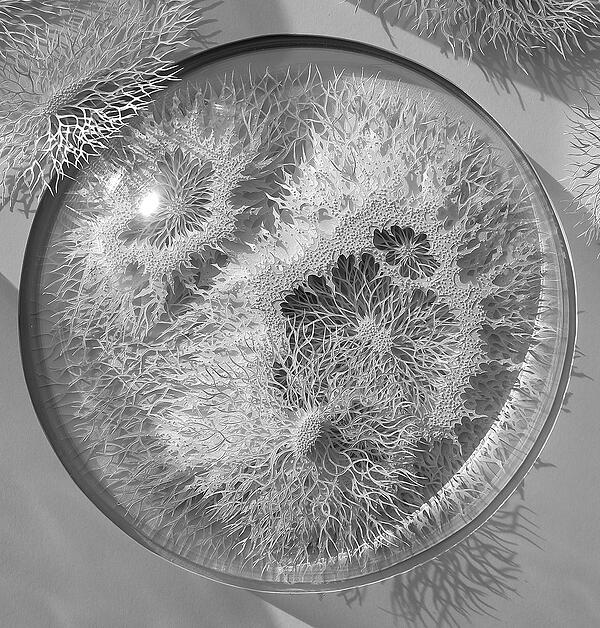
A few weeks ago my wife took my two grandchildren to a paper-cutting artist who snipped out near-perfect likenesses of both their profiles in a matter of a minute with nothing more than paper and scissors. As I am incapable of doing the same with a pen and paper- - much less scissors -- in any amount of time, I was greatly impressed. This led me to look online for more examples of paper-cut art; of which, it appears, there are more than a few. One of the most impressive examples that I found of this art form was a project by artist Rogan Brown.
Aptly titled "Outbreak," these paper-cut figures are painstakingly-detailed reproductions of microscopic pathogens and human body cells. While it took the artist cutting out my grand-children's profiles less than two minutes, artist Rogan Brown worked on OutBreak for four long months. As I have even less patience than graphic talent, I was impressed yet again and wished I could behold them in all their 3D splendor; but having even less money than either talent or patience, it was impossible to imagine how that could ever happen -- I Mean, what would you have to pay an artist to possess such an intensely time-consuming creation? No, online pictures were the only way work of this nature could ever be enjoyed by the average individual.
- 0 Comments
- Jul 8, 2014 12:30:00 PM
- Posted by Brendan Barnard
- Topics: 21st Century Classroom
Google and Lego want to send kids to the moon!

Forty-two years have passed since Gene Cernan was the last man to walk on the moon. I think it is way past time that we went back and I am pleased to find I'm not the only one who thinks so...
It's called the 2014 Moonbots Challenge. Sponsored by Google and LEGO for 9 through 17 years olds, its goal is to stimulate interest in young people about returning to the moon. First the kids are asked to form teams and produce a video that answers the question “Why should we go Back to the Moon for Good?” Twenty-five teams are picked from all over the world based on their answers in their videos. Each of the twenty-five video winners will then get a LEGO MINDSTORMS robotics toolkit, a lot of LEGO bricks and some other as yet unspecified materials (faux moon rockst?) with which to build a robot capable of surviving in a simulated moonscape.
- 0 Comments
- Jul 2, 2014 3:28:06 PM
- Posted by Brendan Barnard
- Topics: National News, 21st Century Classroom
Silicon Valley stars put up $15 Million in prize money to inspire future mathematicians
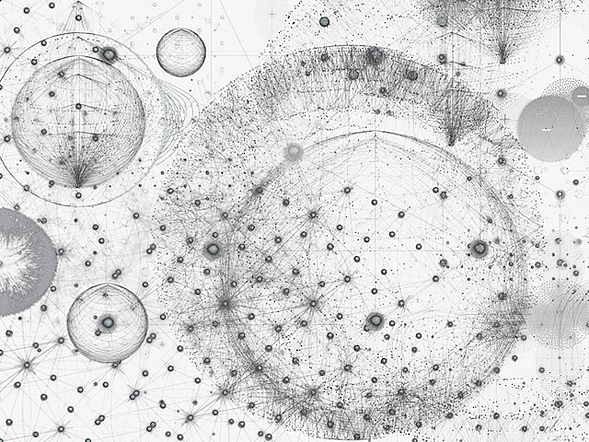
After very little deliberation I have decided to forgo the Nobel Prize in Physics and work on the less well-known but better funded Breakthrough Prize in Mathematics announced just last year by Mark Zuckerberg, Yuri Milner and their respective wives. The aim of the prize is to help make mathematics a more appealing career course. It’s discovery certainly did wonders for my view of the subject!
My interest in a Nobel had been waning since 1980 anyway when they debased the Nobel Prize Medal by cutting the gold content from 23 to 18 carat. But what really decided me was learning that the Breakthrough Prize this year was 3 million dollars, 2 1/2 times the Nobel’s measly 1.2 million. This year's five winners will take home a total of...um, let’s see...that’s fifteen million dollars (I obviously need to practice more).
- 0 Comments
- Jul 1, 2014 4:28:46 PM
- Posted by Brendan Barnard
- Topics: Math, National News
NASA thinks 3D printing is good enough for the space station, now how about your classroom?
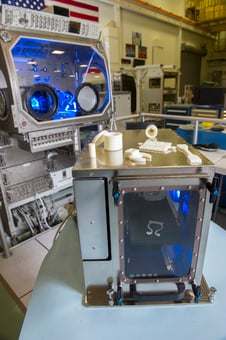
Building spaceships in space, that is the promise of 3D printing! Of course additive manufacturing technology of that magnitude remains far in the future, but the future begins this August when the first 3D printer, built by Made In Space and tested for safety and operational requirements, Al, is lifted to the International Space Station (ISS).
The orbital test of Made In Space’s 3D printer is part of the "3-D Printing in Zero-G Technology Demonstration" project. This project is part of a competitive Small Business Innovation Research (SBIR) program which encourages domestic small businesses, with government financial assistance, to engage in research and development that might prove profitable while advancing high-tech development in the US."Throughout our partnership with Made In Space, we have helped prepare the printer to work in an environment that is literally out of this world," said Niki Werkheiser, 3-D print project manager at Marshall Space Flight Center. "NASA engineers have a vast amount of experience designing and certifying hardware to operate in space. We were happy to share that knowledge with Made In Space. As a result, the hardware passed testing with flying colors."
- 0 Comments
- Jun 26, 2014 12:00:00 PM
- Posted by Brendan Barnard
- Topics: 21st Century Classroom, International News
court ruling gives teachers even more incentive to challenge students
Teaching has always been a tough, thankless job. Back before the teachers’ unions managed to give members of the profession some degree of security it was a job that allowed hiring and firing at the whim of the educational powers-that-be. In recent years there have been complaints that teachers’ unions have taken the system too far the other way and that it is now impossible to get rid of bad teachers, thereby making it impossible for students--particularly minority students--to get a good education. That was the argument made by the nine students before Los Angeles Superior Court Judge Rolf Treu in Vergara vs State of California. Judge Treu saw it their way. Plaintiff Julia Macias, entering high school this year, said Judge Treu’s decision proved “students have a voice and can demand change when we stand together.”
This is one of those rare times when we can say with no attempt at flippancy, that we feel strongly about both sides of this debate. How can we not sympathize with students who feel their futures have been jeopardized by poor teachers and entrenched bureaucracy? And how can we ignore the feelings of those good teachers -- certainly the vast majority -- who believe their careers and their family’s future is now in jeopardy from over-zealous politicians, looking for quick fixes to complex funding problems? We can’t…
- 0 Comments
- Jun 13, 2014 12:30:00 PM
- Posted by Brendan Barnard
- Topics: Local News, National News, Education Politics
ROBOTSLAB NAMED WINNER OF THE RBR GAME CHANGER AWARDS
RobotsLAB BOX recognized for the innovation, creativity and delivery of a “Game Changer product” in the education market.
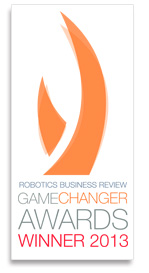 Santa Clara, CA, Wednesday, October 23rd 2013 - A panel of distinguished experts from NASA’s JPL, universities around the world, the investment community and Robotics Business Review, chose RobotsLAB BOX to join an exclusive group of products recognized for outstanding achievements.
Santa Clara, CA, Wednesday, October 23rd 2013 - A panel of distinguished experts from NASA’s JPL, universities around the world, the investment community and Robotics Business Review, chose RobotsLAB BOX to join an exclusive group of products recognized for outstanding achievements.
The awarded product – RobotsLAB BOX, is a teaching-aid, designed to help educators demonstrate abstract concepts in math and science using robots.
RobotsLAB BOX won the Game Changer Award in the Education category, one of twelve categories honored by the Game Changers Awards. The distinguished awards are celebrating exceptional developments in technology, innovation, accessibility and delivery.
- 2 Comments
- Oct 23, 2013 5:07:00 PM
- Posted by Brendan Barnard
- Topics: Robotics, Local News, EdTech, STEM, National News, Awards, Press
HOW THE U.S. CAN ENGAGE GIRLS IN STEM
Men are twice as likely to be in STEM positions as women, and one out of every five female science and engineering graduates has left the labor force completely.
- 0 Comments
- Oct 21, 2013 4:00:00 PM
- Posted by Brendan Barnard
- Topics: EdTech, STEM, Education
NAO, THE HUMANOID ROBOT IS USED TO ATTRACT STEM STUDENTS
Robots are a great learning resource. NAO, a humanoid robot made by Aldebaran Robotics of France, has become one of the most popular robots on the STEM learningscene.We recently talked about a robot fashion show put on in Austin, Texas by the robotics club of a local high school.
- 0 Comments
- Oct 17, 2013 9:10:00 PM
- Posted by Brendan Barnard
- Topics: Robotics, EdTech, STEM
Relevant Posts
- Augmented Reality: A Tool for Teaching Students Robot Programming
- Fostering Innovation Through Youth Education in STEM and EdTech
- How Parents Can Foster STEM Learning Beyond the Classroom
- How Robotics Cultivates a Deep Understanding of Mathematics in Students
- RobotLAB Receives EDTech Chronicle 2023 ‘BESTIE’ Award for Landmark Partnership with American Samoa Dept. of Education.
Subscribe to Email Updates
-
I Want To Learn MoreADDITIONAL INFORMATION

